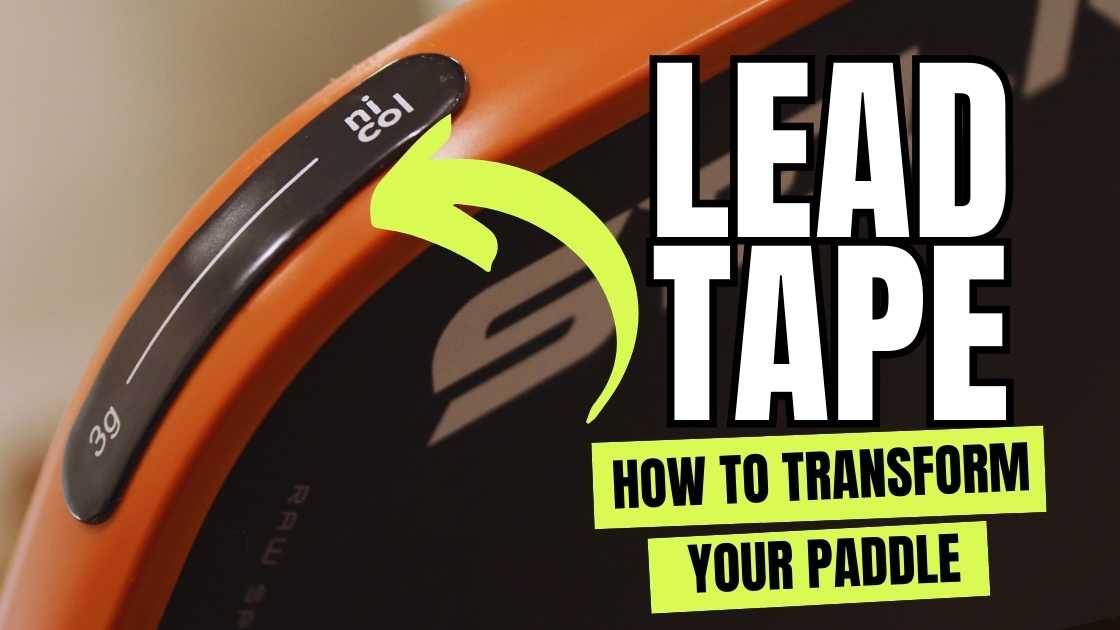
Pickleball Lead Tape: How to Get the Most Out of Your Paddle!
Are you tired of your pickleball paddle but aren’t ready to buy a new one? Adding lead tape can transform your old paddle and give it new life. Depending upon where you put it, the lead tape can provide more control, better balance, or more power. Here’s everything you need to know about lead tape and how to put it on your pickleball paddle.
Lead Tape for Pickleball Paddles
Lead tape is an adhesive strip that can be added to a pickleball paddle to add weight and change the way it plays. Lead tape has been used for decades in tennis and golf and is an easy way to customize your equipment. Pickleball players have been using it to adjust the balance of their paddle and customize it to their style of play.
Lead Tape Size
There is a variety of lead tape available on the market. It is available in precut strips or in a large roll where you can cut it yourself. Lead tape can typically be found 1/2 inch or 1/4 inch wide strips. Each size can also have a different thickness and density. The narrower 1/4 inch lead tape comes in either 0.25 grams per inch or 0.5 grams per inch. The wider 1/2 inch lead tape typically comes in 1 gram or 2 grams per inch.
Narrower pickleball paddles that are under 14mm with an edgeless design should use the 1/4 inch wide lead tape. Thicker paddles with an edge guard can use the 1/2 wide lead tape. We’d recommend using the thicker, heavier lead tape regardless of size so that you don’t have to layer it on top of each other.
Precut lead tape is the easiest and most popular option for new and experienced players. It comes in 3 gram or 0.1oz sections that are peel and stick and easy to use. This option is more expensive but saves you the time of having to cut, measure, and weigh your lead tape.
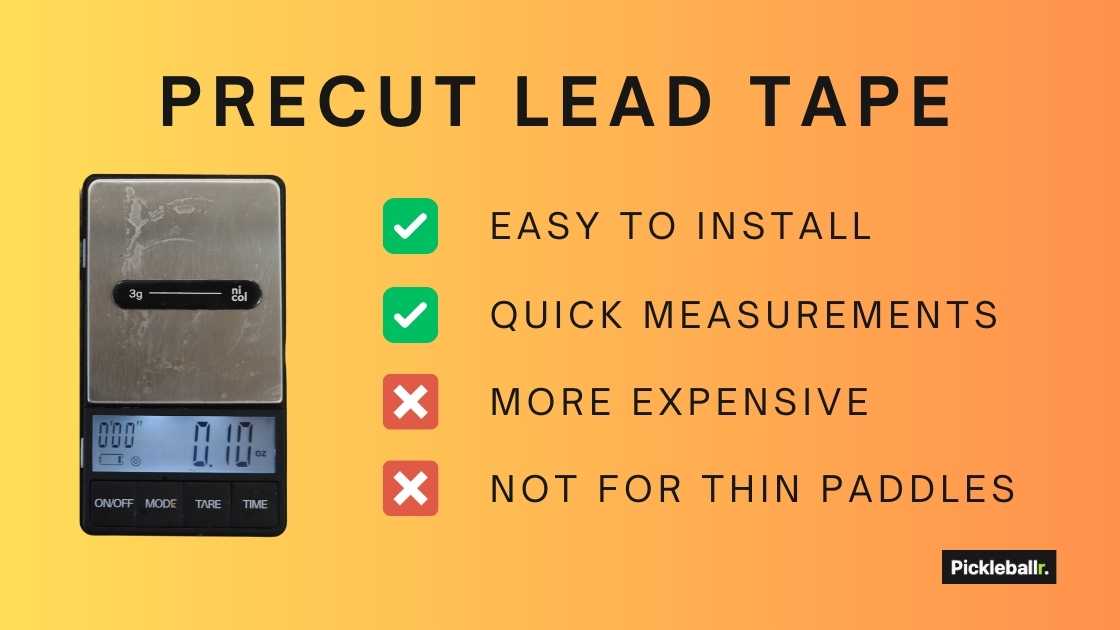
Is Lead Tape Safe
Lead is considered a toxic metal and too much exposure is considered dangerous. Lead poisoning is typically caused by either eating or ingesting it, but breathing it in can also cause it. The use of leap tape on sports equipment typically isn’t thought of as dangerous. It is also very common to cover your lead tape with electrical tape or edge tape to avoid skin exposure.
Tungsten is another option that is available if you want to avoid using lead all together. Both Wilson and Selkirk offer 1/4 tungsten weighted tape. Tungsten tape is more expensive than lead but is also a popular option to consider. You won’t have any issues choosing tungsten over lead
Why Should I Use Lead Tape
Many pickleball players and tennis players alike can go through life without ever adding lead tape to their equipment. Other players swear by it and add lead tape to their paddle or racquet as soon as they buy it. Here are the main reasons you should consider adding lead tape to your pickleball paddle:
- The paddle doesn’t feel balanced on contact
- The paddle doesn’t have enough power
- The paddle feels too light when you swing
- You feel like your paddle is limiting your performance
- You enjoy customizing your equipment
There are many different reasons why you should use lead tape, and the main reason would be that you want to try something new. It’s easy to fall out of love with your favorite paddle, and sometimes adding a bit of weight to the sides can bring it back to life.
You should think about lead tape as an affordable and versatile way to customize your pickleball paddle. Using lead tape is also considered a legal modification per the pickleball rules. It is mainly trial and error, so you can experiment with how much weight and in which location complements your game the best.
Where To Put Lead Tape on Pickleball Paddle
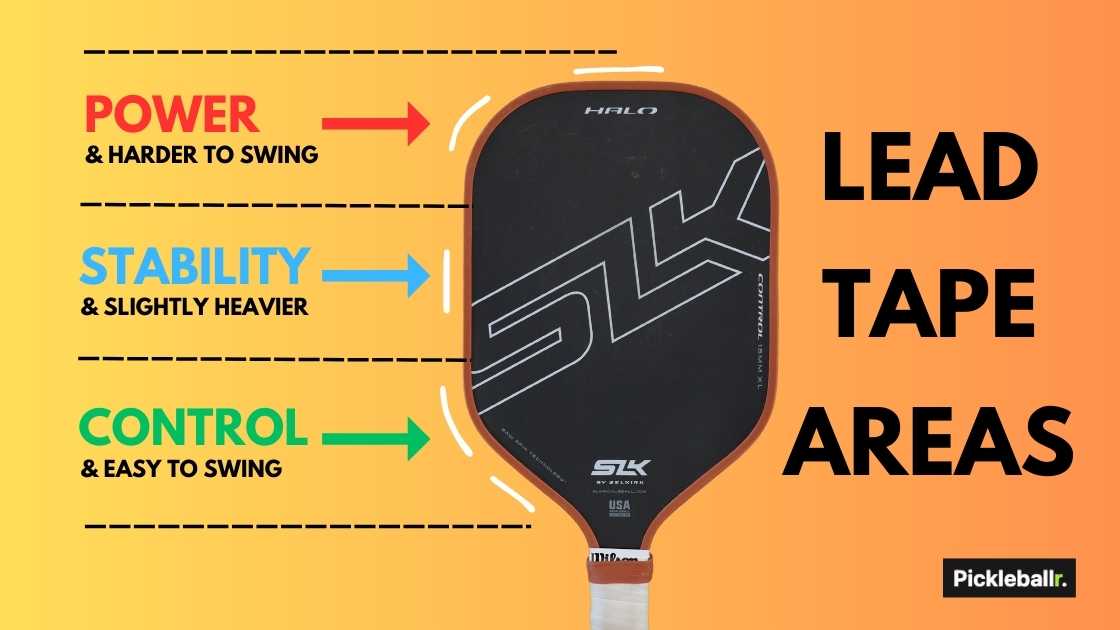
Lead tape is applied around the edge of the pickleball paddle. Depending upon your needs, you may need to apply it to the top, sides, or corners of the paddle. The easiest way to figure out where to put lead tape is to think about your pickleball paddle like a clock.
When looking at your paddle, the sides would be at 3 and 9 o’clock, the top corners would be at the 2 and 10 o’clock positions, and the bottom corners would be the 4 and 8 o’clock positions. Adding weight to each spot on the paddle will impact the way it swings and how the ball responds.
More Power
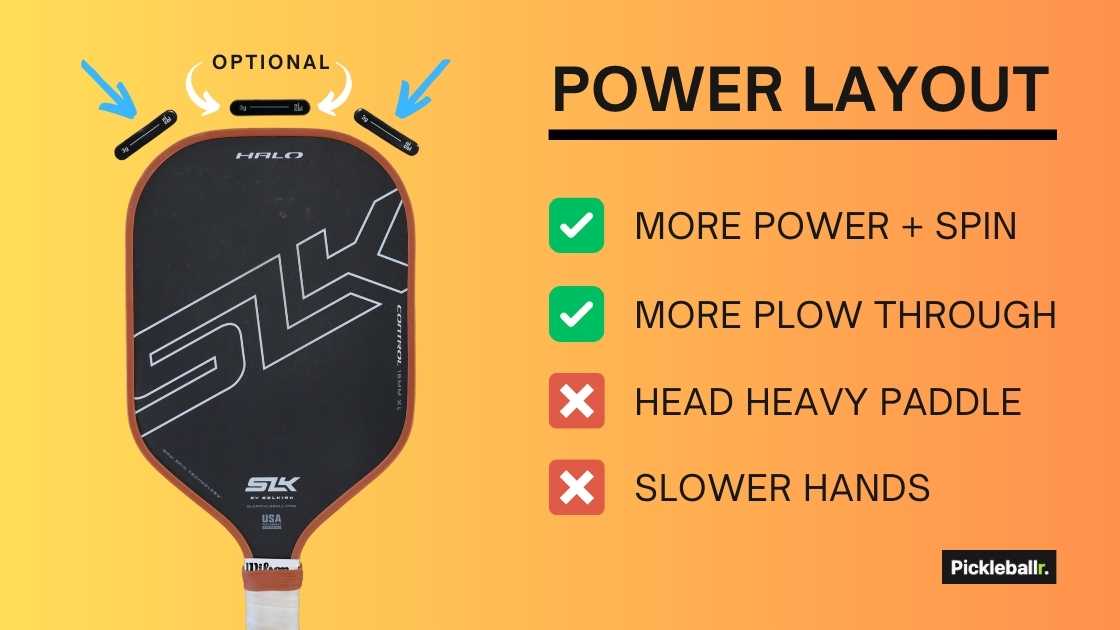
If you’re looking for more power and your paddle feels easy to swing, you’ll want to add lead tape at the top towards the corners. You can add weight in the 12 o’clock position, but it may change the balance of the paddle too much. We’d recommend starting in the corners with the least amount of weight possible.
Adding weight to the top of the paddle will increase the drive and plow through of the paddle. This means that your paddle will have an easier time going through the ball and feel more effortless. The trade-off here is that the paddle will start to feel heavier and might move slower in your hands during net battles. If you find that your shots just don’t have enough pop, you may want to add weight at the top of the paddle.
More Stability and Bigger Sweet Spot
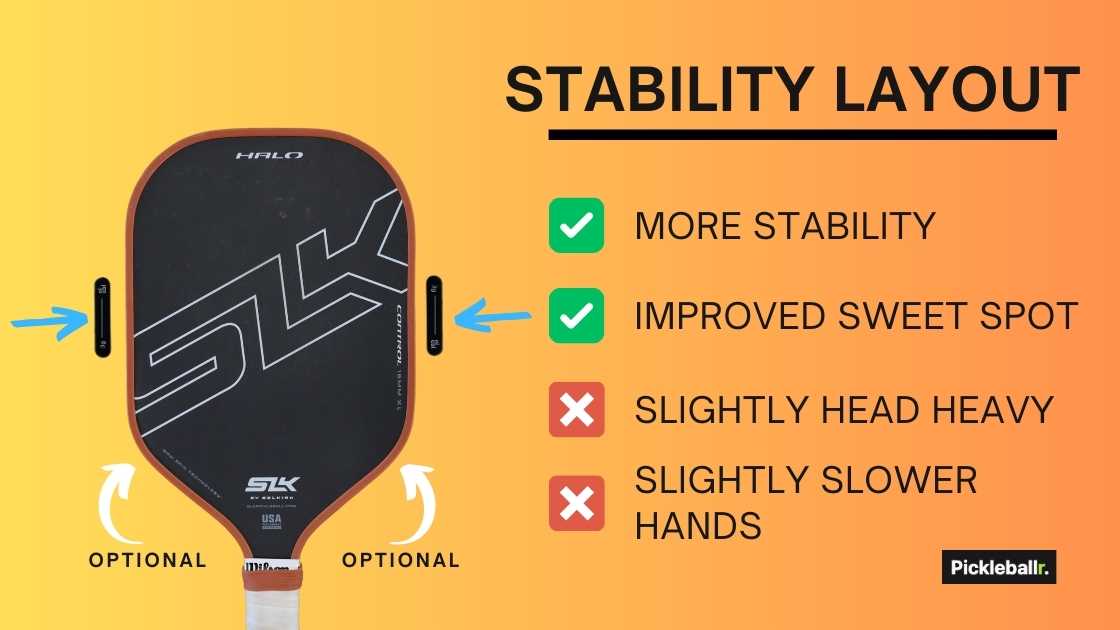
Adding lead tape to the sides of the paddle at the 3 and 9 o’clock position will increase the stability of the paddle and increase the size of the sweet spot. It will also slightly increase the power of the paddle. The paddle will become more head heavy and take slightly more effort to swing.
You can add lead tape to the sides of your pickleball paddle if you’re not concerned with the current weight or swing weight of your paddle. Adding weight to the sides is a great place to test and see how it feels. Volleys and dinks should also feel more stable on contact, but the paddle might move slower through the air.
More Control and Easy to Swing
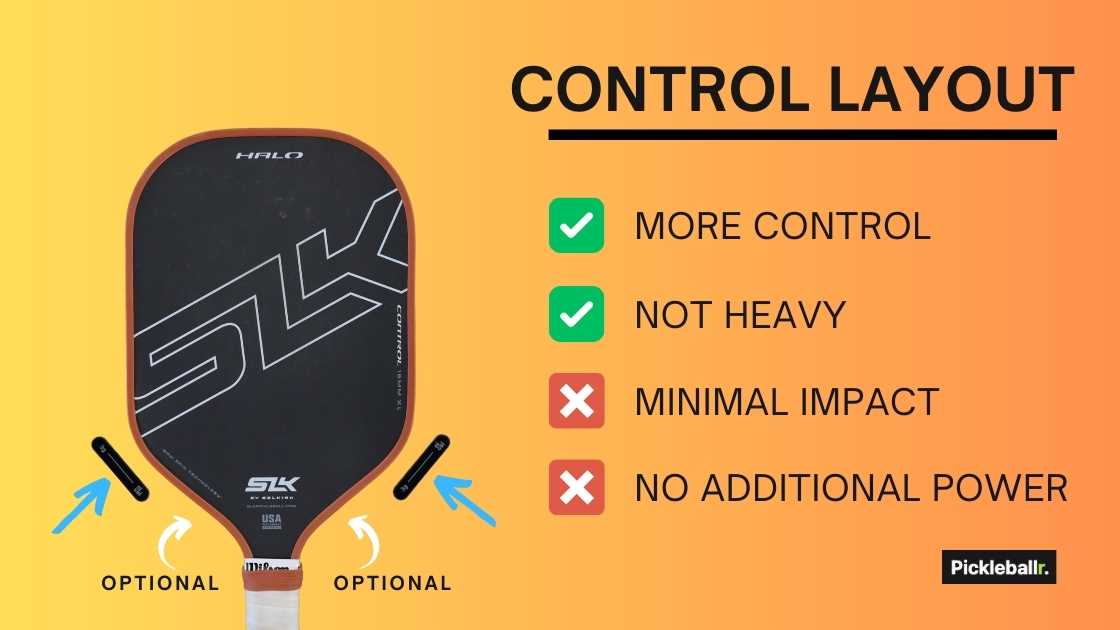
If you’re looking for more control but you don’t want the paddle to feel much different than it already does, adding weight to the bottom corners will be your best bet. Adding weight to the bottom corners in the 4 and 8 o’clock positions will provide a little more stability and slightly increase the size of the sweet spot.
We’d recommend starting at the bottom corners if this is your first time using lead tape. This will allow you to start small with minor changes. The swing weight of the paddle will only increase slightly, and the paddle shouldn’t feel much heavier. You can start by adding a one 3 gram strip to each bottom corner and slowly adding to it after playing a few games. If you’re not happy with the stability or paddle feel after that, you can try adding weight to the sides.
Big Sweet Spot but More Weight

Another popular layout for lead tape is to add weight to all four corners. This can give you more stability, a big sweet spot, and additional power. All of these benefits do come with a trade off. The balance of the paddle will change and it will feel more head heavy. The overall weight of the paddle will increase as well.
If you have a lightweight paddle that is easy for to handle, we’d definitely recommend giving this lead tape layout a chance. You get all of the benefits from adding lead tape to each corner and the paddle is still easy to maneuver. If you paddle already feels a bit heavy for you, this might not be the best layout. You can always give it a try and see how it feels.
How to Add Lead Tape to Your Pickleball Paddle
Adding lead tape to your pickleball paddle can feel like a complicated task if you’ve never done it before. Luckily, you can get started with lead tape in just 5 easy steps. In this example we’ll use precut or tungsten strips.
Buy the Right Lead Tape
The first thing you need to do is buy the correct lead tape for your specific paddle. If you’re using a narrow paddle without an edge guard, you’re going to need 1/4 inch width tape. If you’re using a thicker paddle with an edge guard you can use 1/2 inch tape.
We’d recommend using the precut 3 gram or 0.1 oz strips that are available online for thicker paddles. Players with narrower paddles can use tungsten tape from Wilson or Selkirk. If you’re feeling adventurous you can always buy a roll of lead tape in whichever size you need and have fun cutting, measuring and weighing!
Clean Your Paddle
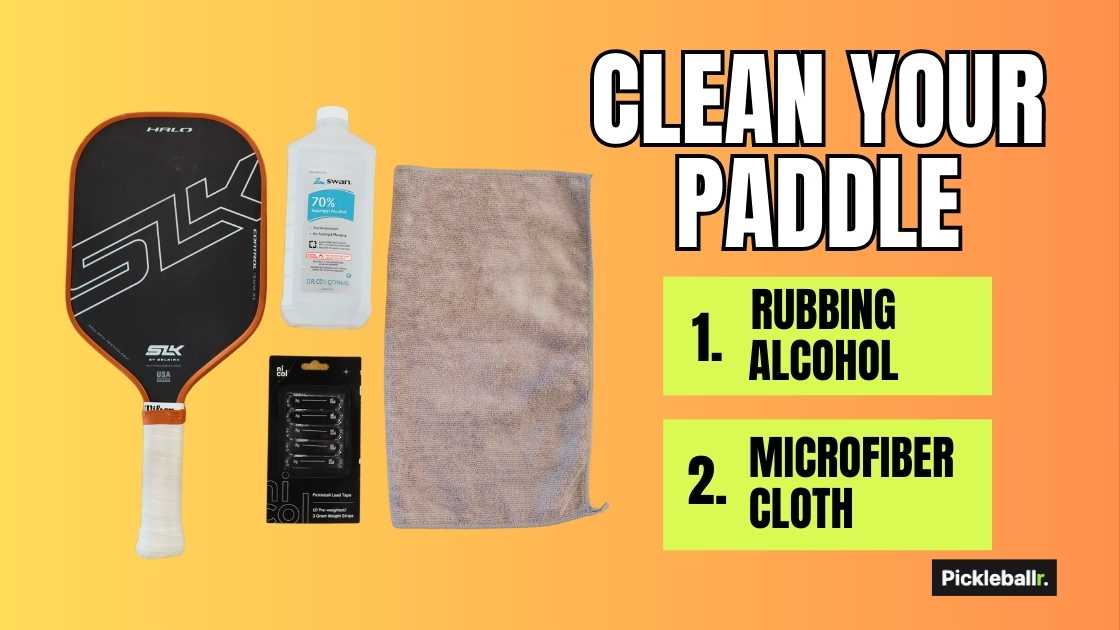
Once you’ve purchased the right lead tape it’s time to clean your paddle. You can use rubbing alcohol and a microfiber cloth or paper towel. Clean the edges of the paddle all the way around and let it dry completely. You can wear gloves if you’re worried about oil from your fingers getting on the edges but that isn’t necessary.
Apply the Lead Tape
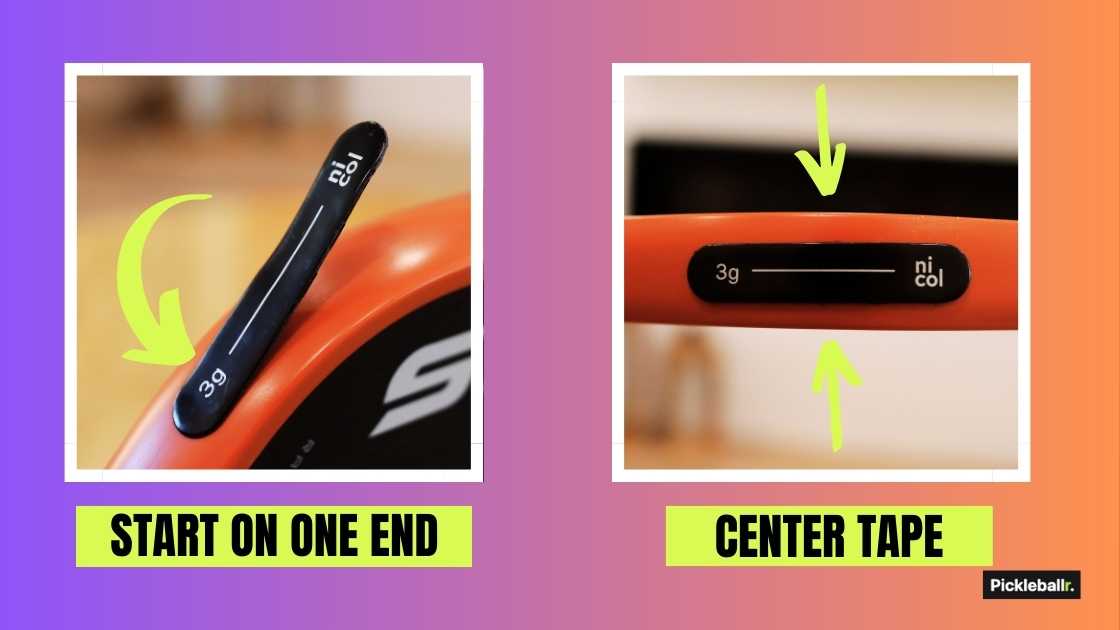
Next you’ll decide where exactly you want to put the lead tape. We’d recommend starting at the bottom corners. Remove the sticker on the back of the strip and apply it to each bottom corner. Start closer to the handle and work your way up. Try to keep the tape in the middle of the edge of the paddle so the weight stays balanced. You can use a credit card to remove any bubbles and make sure it is secure to the paddle.
If you’re using a roll of lead tape, we recommend cutting strips in 3 inch or 4 inch increments. This will help you keep a consistent weight on each side and will be easy to add up the total amount of weight you’ve added.
Test Your Paddle
As we said before, adding lead tape to your paddle is trial and error. Start at the bottom corners and test out your paddle. If it doesn’t feel much different or isn’t providing a better feel, you can add more tape to the sides or layer on top of the bottom corners. Sometimes one layer isn’t enough weight to make much of a difference.
If you find that you want more power you can add another strip to each side of the top corners. Make sure to try your paddle before adding too much weight. Adding weight at the top of the paddle will make it feel heavier when you swing.
Cover Your Lead Tape
Once you’ve found the right combination of lead tape in the right location, it’s time to cover it with tape. You have a few different options to cover your lead tape. Many pickleball brands make attractive edge tape that will fit your specific paddle. You can also use electrical tape if you already have some laying around, but it might be worth buying higher quality tape for this project.
We’d recommend using 3/4 inch wide electrical tape for thicker paddles and 1/2 inch wide for narrower paddles 14mm and below. Applying the edge guard is similar to lead tape. Start at the bottom near the handle and work your way up along the edge of the paddle. Try to keep the tape lined up in the center and
Conclusion
If you’re looking to improve your pickleball skills without investing in a new paddle, adding lead tape can be a game-changer. Lead tape allows you to customize your paddle’s weight distribution, providing more control, power, or balance to suit your playing style.
So, if you feel like your old paddle is holding you back or simply want to try something new, give lead tape a chance. It’s a simple, effective, and affordable way to customize your paddle and elevate your pickleball game to the next level!